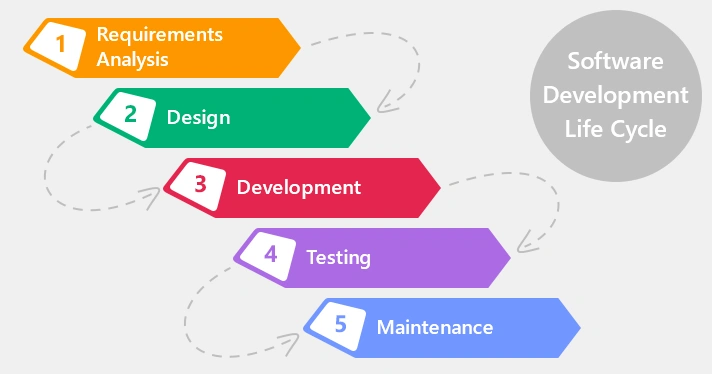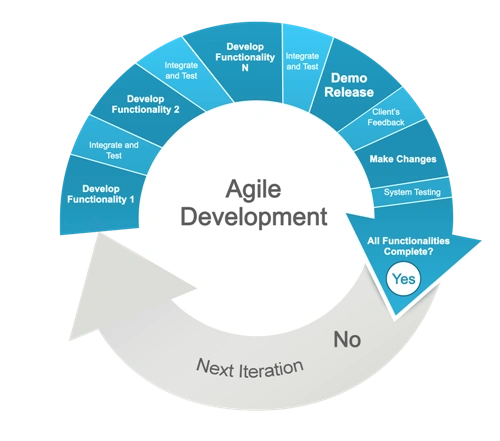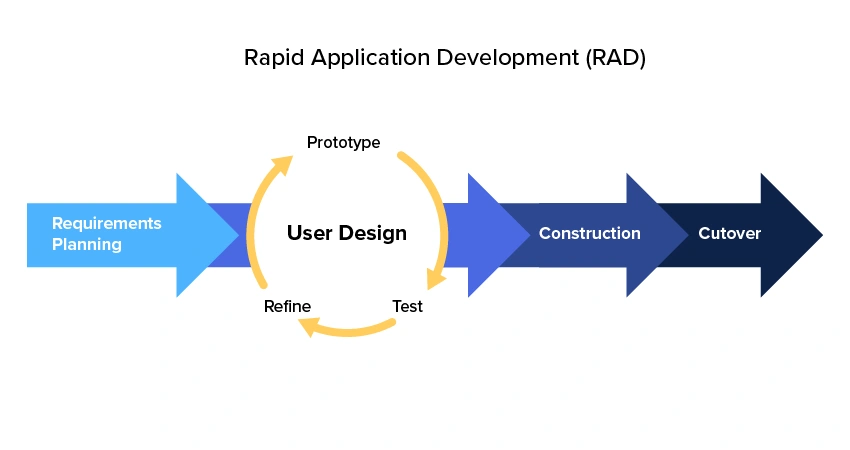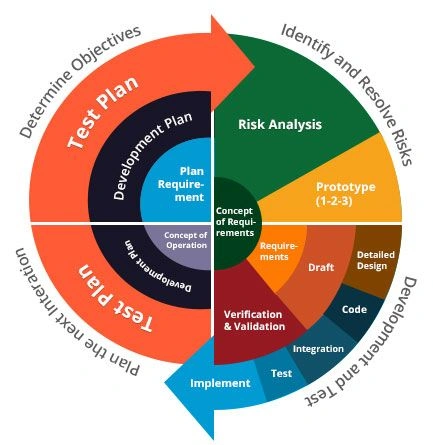Software Development Methodologies


A software development methodology is a formal approach that is used to create software projects. The success of a project is highly dependent on its software development methodology. To manage a project efficiently, the team lead or manager has to go over the different development strategies and decide which one is the best for a specific project. Each of these methodologies comes with its pros and cons. Here is a look at some of the most common software development methodologies.

Waterfall Model
Waterfall model is among the early software methodologies. It was released in a paper in 1970. This model is based upon a sequential and step-by-step approach, like a real-world example of a waterfall (hence the name).
Requirements
To begin, meetings are arranged with the client to record the requirements of the project. These requirements are then analyzed and finalized in the form of SRS (software requirement specification).
Analysis
In this phase, an analysis of the system is run to create the required models and logic which will be needed to create the system.
Design
This stage includes a design specification that contains the outline of technical implementation.
Coding
This stage includes the actual development or coding and uses the design phase to generate a workable product.
Testing
This stage goes through different testing types (like unit testing, integration testing) to see if there is any bug or issue which requires any changes.
Deployment
This stage includes the deployment of the system to the client. All the future maintenance and updates also come in this phase.

Agile
The Agile software methodology is practical and follows the real-world model. It is mainly focused on results and people while covering self-organization, adaptive planning, and lower time intervals for deliverance. Agile uses tools like Extreme Programming and Scrum to target constant changes for enhancements.
To understand why Agile received so much traction, we have to revisit the Waterfall methodology. The architecture to sequentially plan, design, implement, and execute other stages may seem suitable to produce buildings and cars, however, it does not work well with IT solutions. With continuous changes in variables like competition, demand, and hardware, agile finds a delicate balance.
What makes Agile effective is that unlike other methodologies, you do not have to work on a process for months, only to find out that an error in an early phase has rendered your efforts useless. Instead, as it is focused on people, therefore it depends on employees based on trust and encourages team members to communicate with clients in order to comprehend the requirements and formulate solutions with an incremental and speedy approach.
Examples of Agile include Dynamic Systems Development, Crystal, eXtreme Development (XP), Feature Driven Development (FDD), etc.

Rapid Application Development
As opposed to other methodologies which are based on the analysis and recording of requirements along with strict planning, RAD is focused on the feedback from the user and the actual working software. Hence, it can be said that the RAD model is all about action coupled with extensive testing. To understand the RAD model, consider the following steps.
Requirements
Software solutions are created in order to deliver a goal or objective. At the very beginning, RAD attempts to analyze this goal which the software is expected to provide or offer to its user. All the team members like designers, programmers, users meet either face-to-face or via a conference call and hold a discussion over the software which is to be developed and tested. This is followed by an estimated timeline for the project which fits the budget.
Prototypes
As the name of the model suggests, it emphasizes the creation of functional models right from the start. After the deadline, budget, and requirements are calculated and agreed upon, developers begin to build a prototype.
User Feedback
RAD promotes ongoing communication and cooperation between the users and the team for the development of robust software. Users offer constant feedback on different modules of the system so the team can modify and enhance the prototypes, resulting in the production of high-quality completed software.
Repetition
The above steps are repeated continuously until the software is fully completed and conforms to the requirements of the client.
Testing
Before the project is completed, the software goes through intensive testing. It is tested with different use cases to ensure that each component works properly—both as standalone and as a combined unit—to execute the requirements and objectives of the software. Other than the testing by the team, user testing is also an important part.

Spiral Model
The spiral methodology takes inspiration from the iterative model while it also borrows the control and systematic approach of the waterfall methodology. Hence, it is a mixture of linear and iterative approach with an increased focus on risk analysis. This model facilitates releases of the product which are incremental in nature. It is divided into four phases. When software uses the spiral model, it goes through the following phases while using an iterative approach which is known as spirals.
Identification
Like other methodologies, the model begins with the collection of business requirements that are needed for the baseline spiral. While the system progresses in the following spirals, identifying unit requirements, system requirements, and subsystem requirements are the parts of this phase.
Design
It begins with the conceptual design in the baseline spiral. This phase includes physical, logical, architectural, and the final design of the system.
Construct/Build
When the actual software product is created at each spiral, the Construct phase is responsible to look over it. To receive customer feedback, a Proof of Concept is created. To do this, the product is conceptualized in the baseline spiral while the design is created accordingly.
Afterward the build (a software’s working model) is generated along with its version number. Clients get this build to review and provide feedback.
Risk Analysis
The management risks and technical feasibility is identified, estimated, and monitored at this stage. For instance, it can include cost overrun and schedule slippage.
Build your ideal
software today










